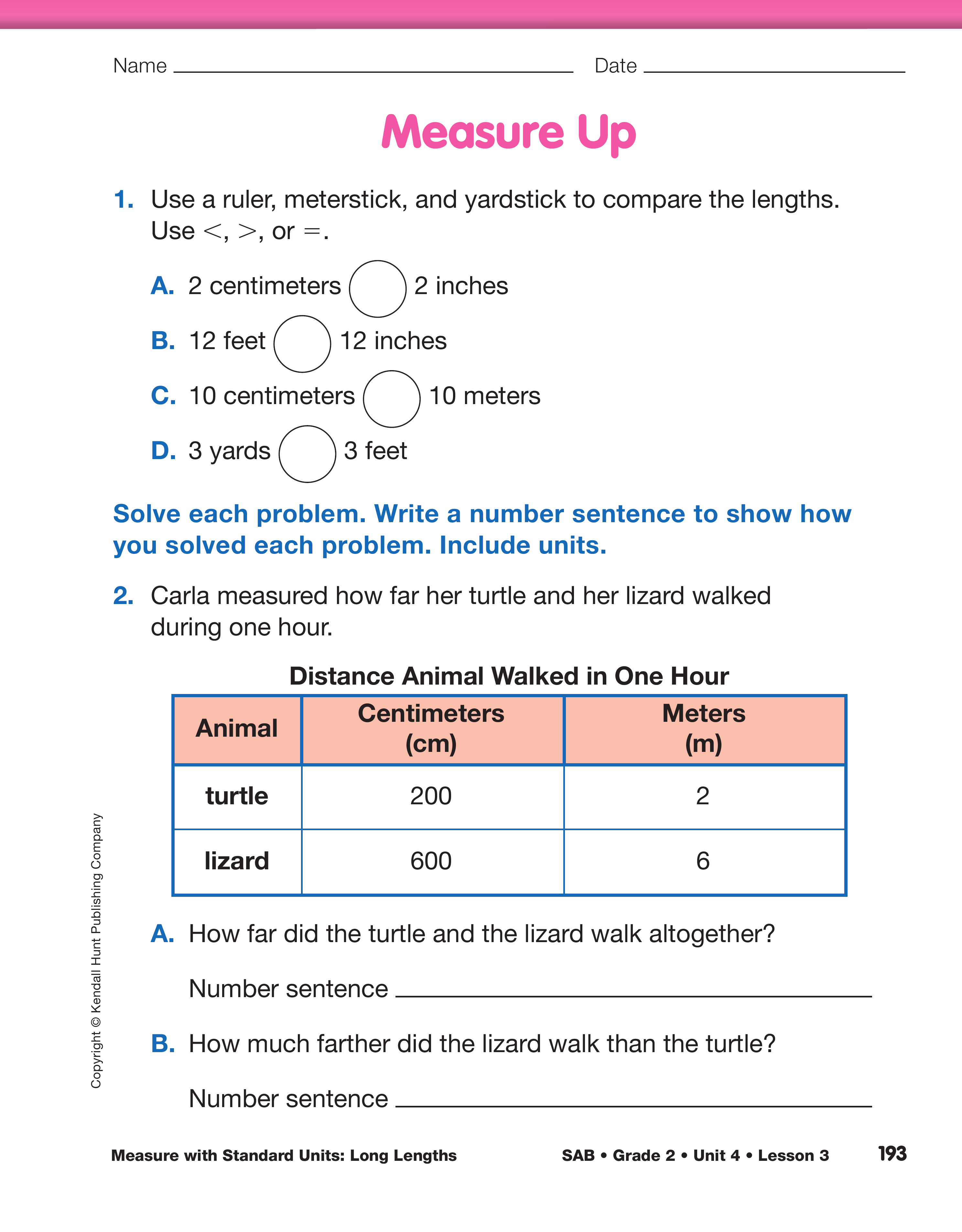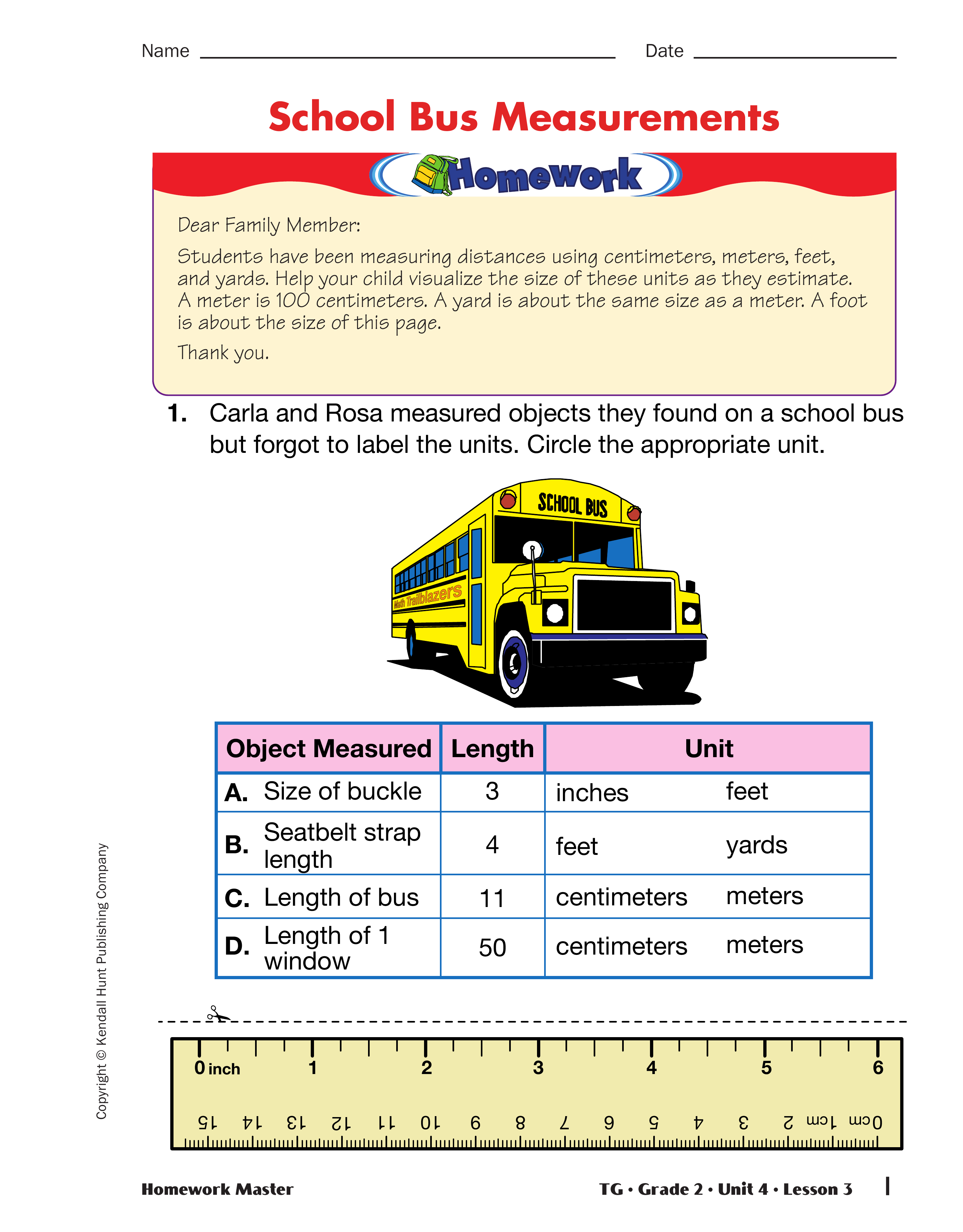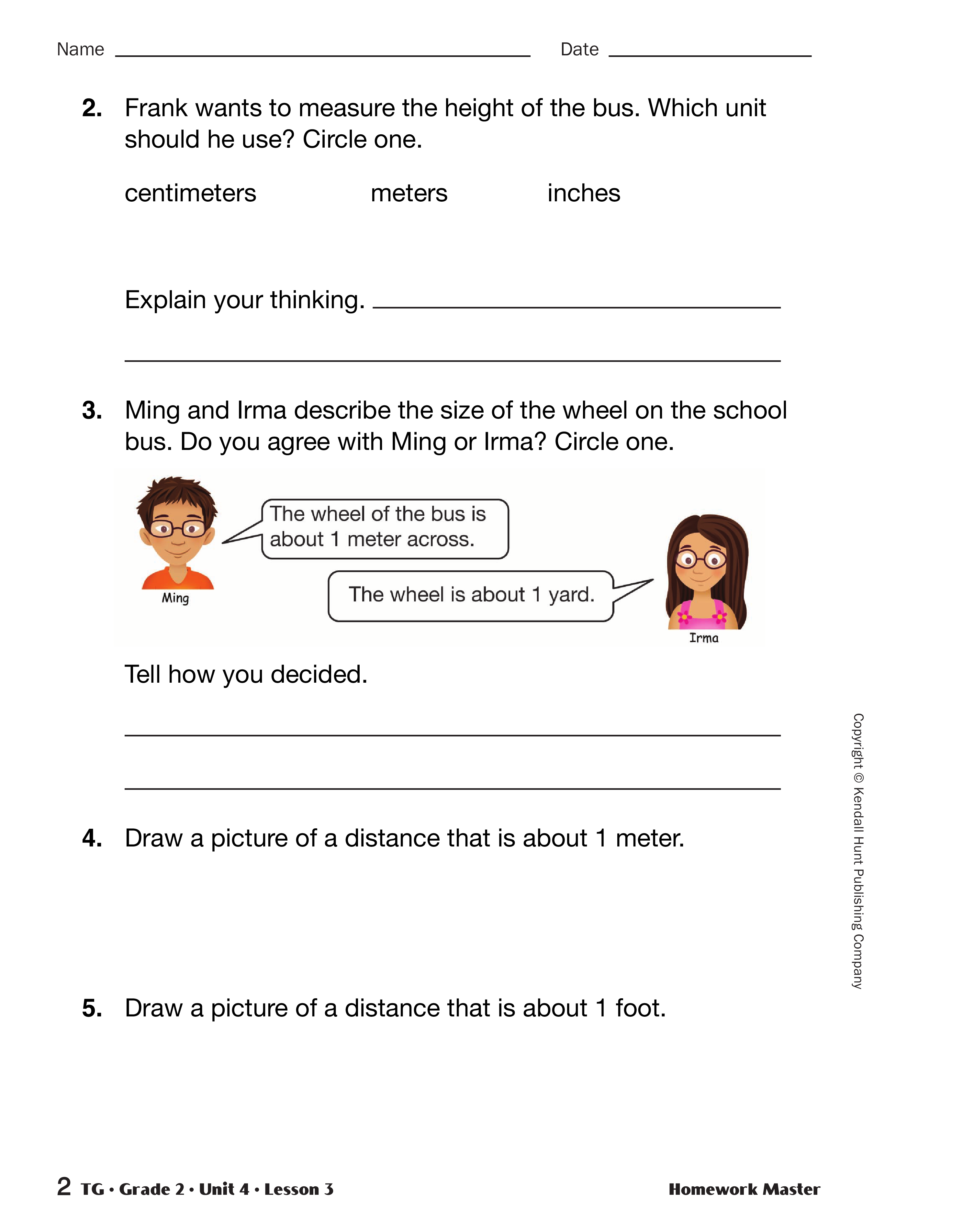Compare Feet, Yards, Meters, and Centimeters. Ask students to remove the Measure Up pages from
their Student Activity Book. Students will need to use
a 12-inch ruler, meterstick, and yardstick as referents
while answering Question 1. Ask students to work
independently while you circulate.
- How did you decide which measurement was
larger?
- Show me what numbers you used to solve
[Question 2A]?
- Help me understand why you would choose that
unit in [Question 4].
Use the Measure Up pages in the Student Activity Book with
the Feedback Box to assess students' abilities to use words
and symbols (e.g., <, >, =) to show comparisons of
quantities [E1], use comparative language [E2], solve word
problems involving length [E3], recognize that the measure of
a length is dependent on the size of the unit of measure [E4],
select and use appropriate units to measure length [E7], and
use labels [MPE6].
See Materials Preparation for a description of an activity that
can provide targeted practice with these Expectations.
Add Examples of Units to Display. Direct students'
attention to the "How Long" display they started in
Lesson 2. Focus on the foot and meter units on the
display. Using their responses to Questions 4–5 on
the School Bus Measurements Homework Masters,
add examples or descriptions of a foot and meter.
Show students the examples you gathered for a yard.
See Materials Preparation.
- What objects are about a foot?
- What objects are about a meter?
- What objects are about a yard?
- What do you notice about the collection of objects
under "yard" and the collection of objects that are
under "meter"? (Possible response: They are
about the same length.)

















